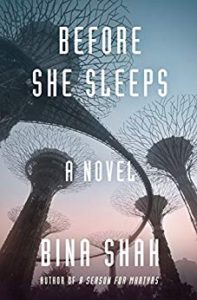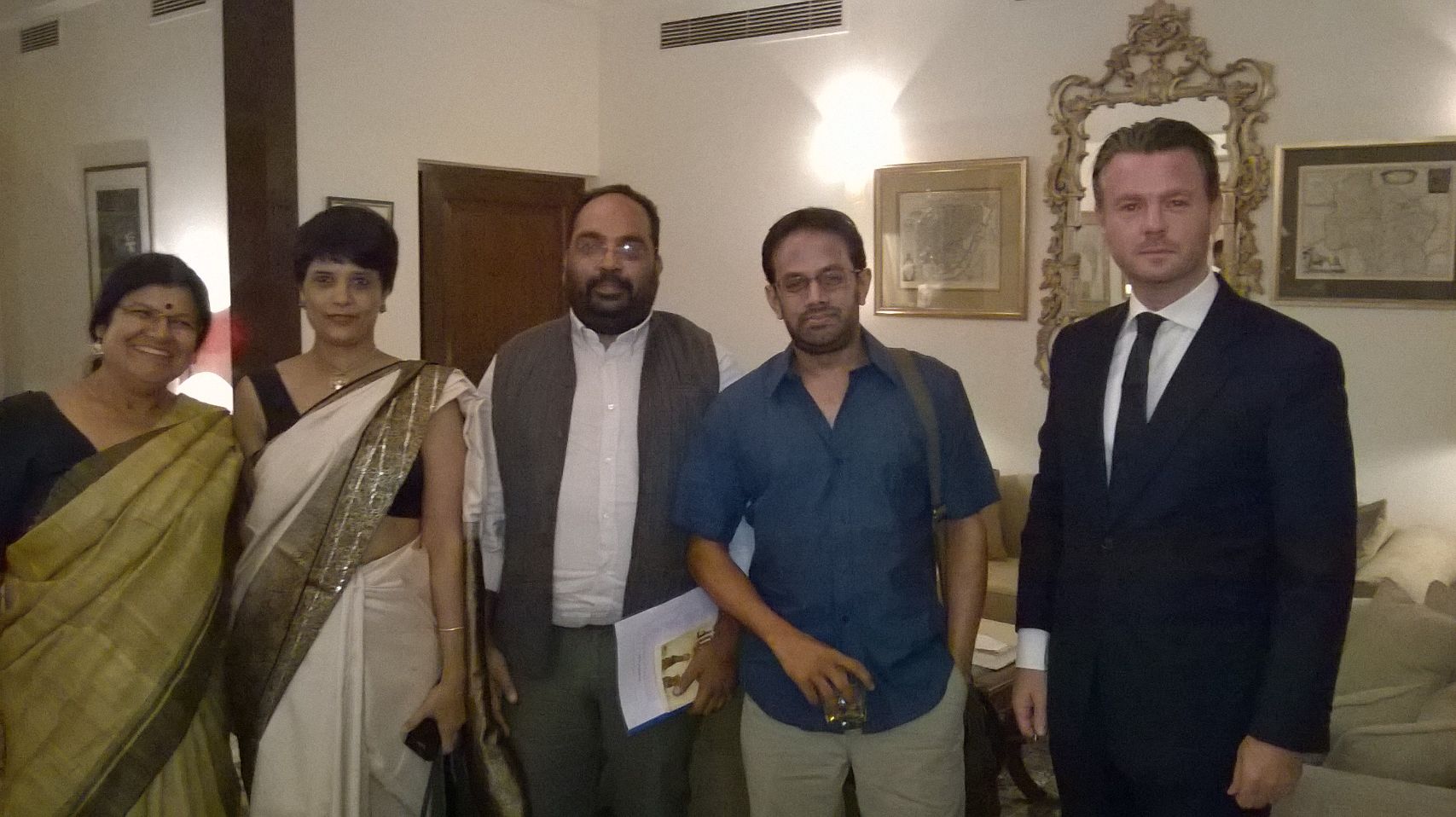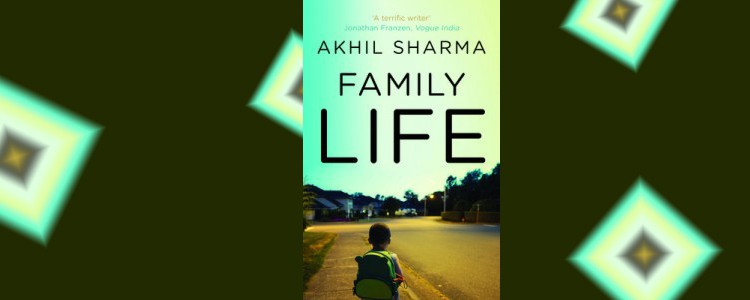An interview with Bina Shah on her feminist dystopic novel “Before She Sleeps”
Before She Sleeps is Pakistani writer Bina Shah’s fifth novel. ( On Twitter: @binashah ) It is about an “illegal” commune of women who reside in an abandoned warehouse on the outskirts of Green City. Their space is called Panah which in Persian means shelter. These women are led by a leader, Lina, and only appear under the cover of darkness. They survive by paying their bills in cryptocurrency with purchases usually made on the black market. Their business is to offer platonic cuddles to male clients in Green City but it is all to be kept under wraps otherwise the “Agency” will hunt them down. The story revolves mostly around twenty-four-year-old Sabine who has been living in Panah since she was seventeen.
The premise for Before She Sleeps is so plausible since it seems much of it already exists if we search long and hard. None of this is really fiction, it’s only pushing the boundaries of truth or reality as we know it today a little further. The Panah can be a metaphor for the silent community women tend to form together even in the most public of spaces with one or two looked up to as guides/mentors. This bonding happens amongst strangers too. Sometimes it is fleeting, sometimes more permanent. Though the dark side of the viciousness of women towards other women too exists.
The relevance of Before She Sleeps with references to “rare whales and giant turtles that had been cloned back into existence”. More so given recent news coming in of 40,000-year-old worms being revived to life. Or “All beef, eggs, in fact anything natural, is created in a lab with synthetic polymers, proteins, DNA.” as news trickles in of meat being manufactured in labs.
Yet the further one reads Before She Sleeps the sense that the story is an excuse for the author’s personality and beliefs that run deep through, definitely more in this book than any of the previous novels Bina Shah wrote. Before She Sleeps will become her transitional work in her oeuvre in time to come. It’s the channelling of herself into a new kind of writer, one who does not abandon her past but looks ahead firmly taking along with her all the recent socio-political experiences accrued. The gender violence evident in the discrimination towards women (otherwise why would there be such a shortage of women in the city?), the persistent patriarchal constructs of social rules of engagement, the very recognisable authoritarian figures in most of the male characters even the nameless ones like Rupa’s “father” who tries to rape her are symptomatic of her simmering rage against the horrors that perpetrated towards women continuously. There is undeniably something different in this novel as compared to her early works. Take for example the section on recipes. “When I found the cookbook, it’s spidery, ethereal handwriting already fading from the pages, I wanted desperately to save it’s contents, if not it’s form. Our mothers, aunts, grandmothers live only in representations of their lives as we, their daughters, try to re-create them.” This is not an off-the-cuff observation by a novelist but it is a sharp observation by Bina, the woman, the thinker, the opinion maker, who has been mulling on this truth for a very long time. In her correspondence with me, Bina Shah says “Unfortunately I think what caused that beyond a doubt was the assassination of my friend Sabeen Mahmud. Suddenly everything because so much more intense, grief-filled, and serious, when I was writing the novel back in 2015. I poured all my emotions about her death – anger, grief, fear, helplessness – into the book, into Sabine’s thoughts.”
Before She Sleeps is an important addition to the rapidly expanding science fiction literature from South Asia and increasingly from the Middle East.
*****
Bina Shah has recently become a regular contributor to the International New York Times. She is a Pakistani writer who is a frequent guest on the BBC. She has contributed essays to Granta, The Independent, and The Guardian and writes a monthly column for Dawn, the top English-language newspaper in Pakistan. She holds degrees from Wellesley College and the Harvard Graduate School of Education, and is an alumna of the University of Iowa’s International Writers Workshop. Her novel Slum Child was a bestseller in Italy, and she has been published in English, Spanish, German and Italian. A Season for Martyrs is her U.S. debut. She lives in Karachi.
- “No citizen is permitted to write or maintain a personal journal or diary” Is the crux of this dystopia is it not? Women need these private spaces to share their thoughts but you take it away they are walking bombs, ready to explore at any moment. This is reality. How and why did you devise this horrific rule?
A regime doesn’t want witnesses to its horrors, and diaries and journals are specific forms of resistance. I was thinking of the diary of Anne Frank, but also the diary that Malala Yousufzai kept under the Taliban and published in the BBC as Gul Makkai. They are historical records as much as personal accounts, and most authoritarian regimes don’t want evidence of the crimes they’ve perpetrated on their victims.
2. How and why did you start thinking of Before She Sleeps especially when the modern classic The Handmaid’s Tale continues to be published and now exists on television too?
I wrote a short story called “Sleep” which became the first chapter of my novel, back in 2006. I added to it until it became about 100 pages long. Then I left it in a drawer, thinking it was a ridiculous premise and I couldn’t execute it. I took the short story to a literature festival in Copenhagen in 2013, and when I read it to the audience, the poet Warsan Shire, who was also there, told me that I had to turn it into a novel. I listened to her, and started working on it in 2014, long before the television series came out. The Handmaid’s Tale was not much of an influence on my work. 1984 by George Orwell was much more on my mind in the devising of such an authoritarian regime. But also the dictatorships that I have lived under in Pakistan, and those of secular dictators in Middle Eastern countries, as well as repressive Islamist regimes in Iran and Saudi Arabia.
3. Isn’t this novel quite a shift for you in the stories you select to tell though the strong women remain the focal point?
It’s a change in genre which was risky and quite frightening for me as a writer. It’s easier and more comfortable to stick with what you have always been doing. But it represented a huge challenge and I decided to give it a try.
4. Has your maintaining the Feminstani blog and writing for papers like The New York Times informed your writing style for novels? Do you notice a shift in the way you present material?
I don’t write the same way in a novel as I do in my blog or my journalism. The writing I do for fiction is more poetic, more musical, more laden with references to other texts, literary (poetry and prose), artwork, religion (there are Quranic references, influences from Sufism, Islamic philosophy), and politics and history. It’s much more creative than my blog or my journalism can ever be.
5. “My fear is an animal I can’t hide”. Isn’t this true of all women?
It’s true of all humans sometimes.
6. Why choose the first person narrative to tell this story for Sabine and third person for the others?
Only Sabine has the first person narrative and that is to make you feel more close to her. It’s more intimate. The others are all told in third person. I wanted to distinguish Sabine from the other narrators, make you feel more invested in her story. I needed both men and women to lend their voices to this narrative, to show the effects of the regime on both genders. I’m making the argument that a world without the female gender is an unbalanced world, and hurts everyone. Most proponents of male domination don’t seem to understand that at all.
7. Is this your first spec-fic book? How did you invent terms like “currency stick”, genetic switch chips, virtual tunnels on the Deep Web, memory slips, and thought-to-device to name a few innovations mentioned?
It’s my first speculative fiction, dystopian book. I never imagined I’d write one. I made up those technologies that you mention. Others, like lab-made meat, or cloned animals, seemed a logical extension of the science we have already, although I did write about them long before they came into the news.
8. How much research this novel require?
A lot! I did a lot of research on the science, since several of the main characters are scientists. I also researched the geographical area I was writing about. I travelled to Dubai several times to observe the landscape, the buildings. And I was caught in a huge dust storm the likes of which I’ve never seen in my life. It appears in a seminal scene in the book as a kind of deus ex machina.
9. “Sometimes I’m seized by sorrow at the position we’re all in, how fragile our inner safeguards against the betrayals that can happen to us in many ways, internal and external.” Why do I get the impression that this is a lament by Sabine not just for the immediate story but by you as well at a larger level too?
It seems a fairly self-evident observation about the world. I’m sure all of us have felt this way at least once in our lives.
10. What is the short story that this novel grew out of? Is it available online?
No, it’s not available online, it was only published in Denmark by a boutique publisher in a very limited edition. Sorry – but this one is miles better!
Buy the hardback and Kindle edition on Amazon India.
14 August 2018








